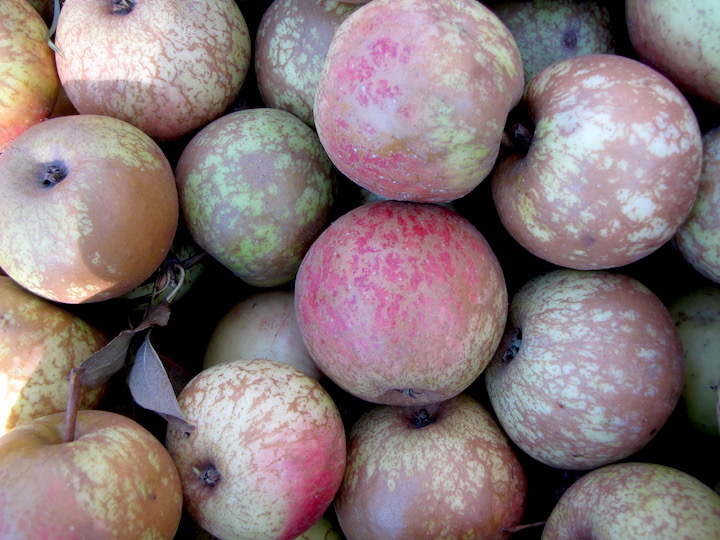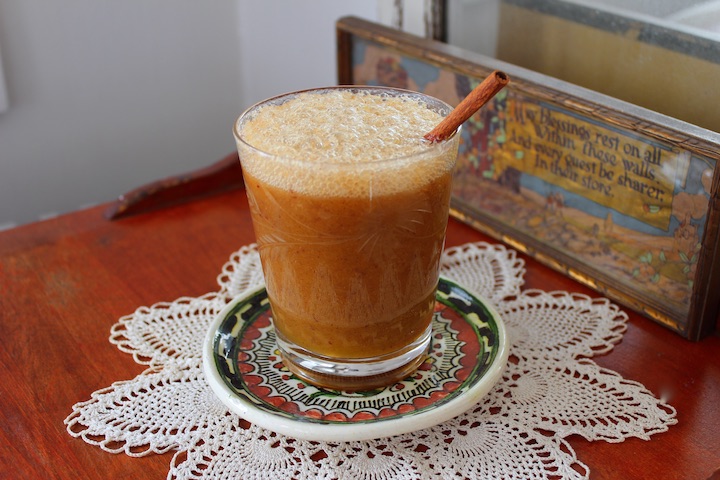
IT IS ONLY FITTING that, during the week leading up to what would have been a three-day celebration of apple cider, we feature two champions of the cider apple: John Chapman (aka Johnny Appleseed) and Ria Windcaller.
Franklin County CiderDays celebrates its 26th year in 2020, and due to the pandemic it has been reimagined this fall as a self-guided tour of area orchards and cideries rather than in-person tastings, workshops, and salons. The event, one of the premiere cider gatherings not just in the United States, but the world, has become a major regional attraction, and Ria Windcaller has been there from the start.
A self-described “home fermenter” when CiderDays began, Shutesbury resident Ria Windcaller has volunteered every year since, eventually becoming part of the event’s leadership team. Her passion for cider doesn’t end there.

Her website, ciderchat.com, features weekly podcasts about cider enjoyed by cider aficionados around the world (she is now approaching 250 episodes since she began five years ago). Her topics are eclectic, including interviews with cider makers, and technical subjects like barrel aging and wild yeasts. But Ria wants to share her love of cider with everyone — consumers, home brewers, and other enthusiasts — with recent podcasts on cider bars and taprooms, choosing a cider, pasteurization, even glassware.
If you love or make cider, or simply want to learn more about this rich, coppery libation that was once America’s main drink and is now experiencing a tremendous resurgence, her podcasts are a good place to start.
This week’s episode features a history of New England apples, an adaptation of Russell Steven Powell’s recent Zoom presentation to the Amherst Historical Society, available on the Cider Chat website or on YouTube.
While Franklin County CiderDays cannot bring the cider community together as usual this fall, some venues on the Cider Trail will have special offerings on CiderDays weekend, November 6-8. There are many local orchards to visit where apples are grown and pressed into cider, and cideries along the Cider Trail and beyond, throughout New England.
* * *
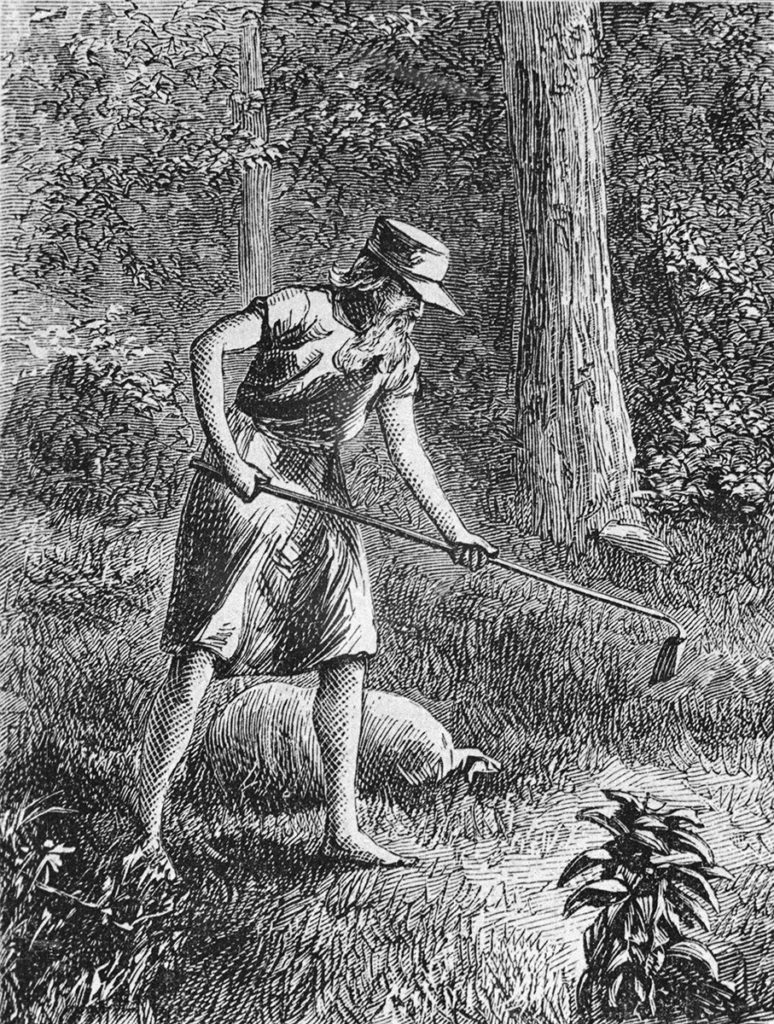
MASSACHUSETTS NATIVE JOHN CHAPMAN (1774-1845) is America’s most famous champion of the apple, yet he remains a mystery to many and is widely misunderstood. Little is known about his early life, for example, other than the bare facts that he was born in Leominster, moved to Longmeadow when he was six, and set out for Pennsylvania on foot in 1797 at age 23.
Chapman didn’t resurface again for nearly a decade, in 1806, where his apple tale begins. But then his life’s story gets tangled in a web of myths. The John Chapman who dedicated his life to apples is forever buried under the many stories piled upon him by others, for generations. He left no written record, and the first- and second-person accounts of his physical appearance and behavior vary wildly.
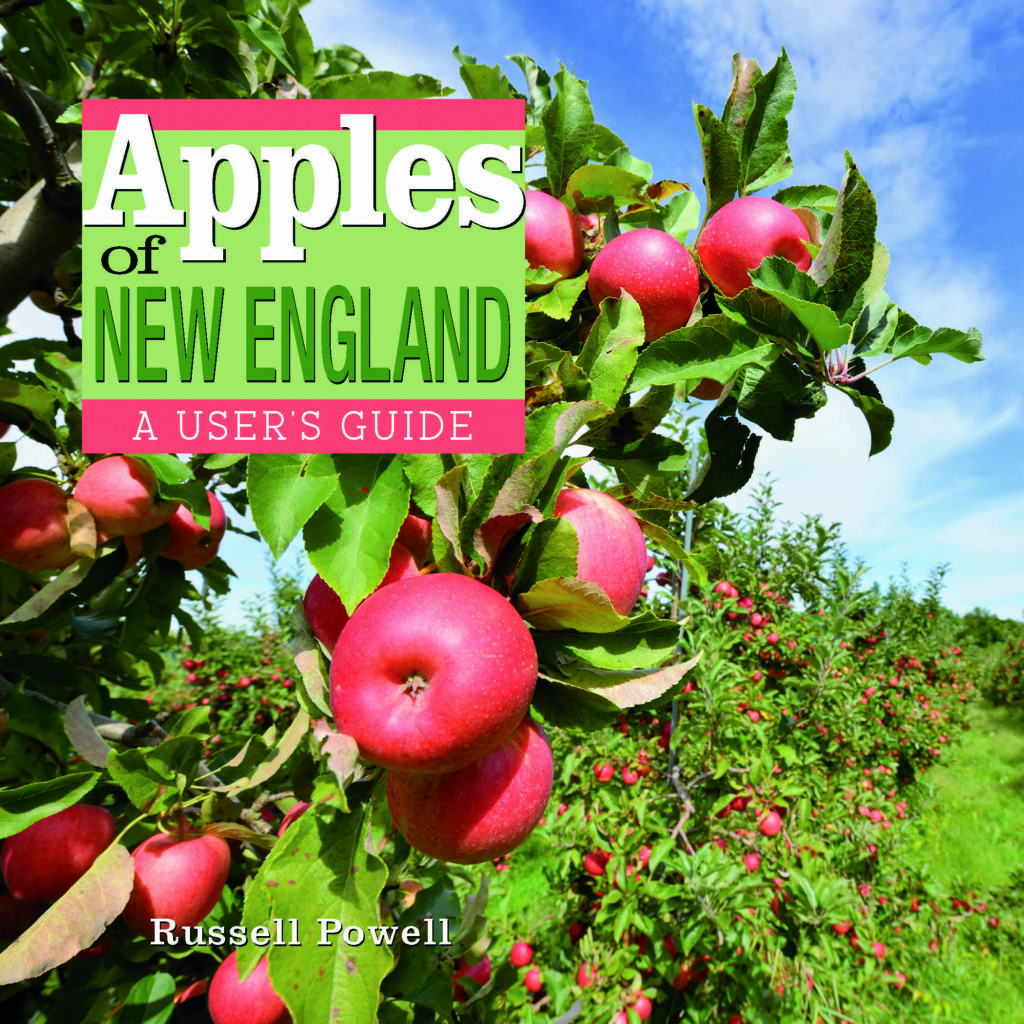
Yet even with what little we know, John Chapman was an amazing figure. Whether we have a definitive record or not, his love of apples can be inferred from the love of nature, herbalism, and spiritual ways ascribed to him and, of course, nearly four decades of planting apple seeds in the wilderness.
Here are excerpts from “The Fathers of American (Wild) Apples: John Chapman and Henry David Thoreau,” a chapter in Apples of New England (Countryman Press), by Russell Steven Powell.
* * *
FEW WOULD DISPUTE that John Chapman did more to spread the apple gene in America than any other individual, planting dozens of orchards across Ohio and Indiana. Yet apples are conspicuously absent from the popular stories about him.
In virtually all of the surviving legends about Chapman, apples are a mere prop, a backdrop bestowing legitimacy and wholesomeness to the teller’s own values. He is portrayed as a holy man, nature lover, herbalist, vegetarian, teetotaler, businessman, buffoon, Midwest Paul Revere, and many more things, depending on one’s point of view, beginning in his lifetime and in every generation since. Some of these are even true.
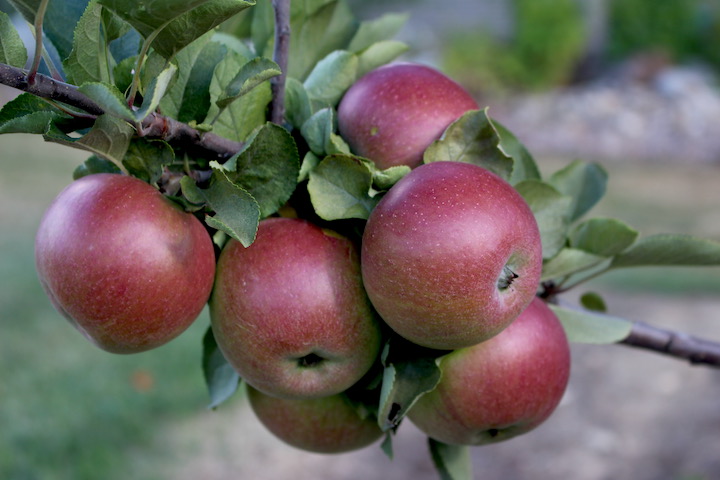
But we have no record of how John Chapman felt about apples. Nowhere in the surviving stories do we gain insight into what motivated John Chapman to devote his adult life to sowing apple seeds, often in primitive conditions. His connection to apples is stated as a mere fact, without embellishment or explanation. All we have are a nickname and a list of business transactions. We can only infer from his name and the length and breadth of his plantings that he was passionate about the fruit.
Chapman planted his apple orchards from seed in Ohio and Indiana between 1806 until 1845. Even in this, the legend begins: Chapman has been reported to have planted orchards in more than 30 states.
Chapman was an indefatigable walker from the time he set out from western Massachusetts as a young man on foot to Pennsylvania. He crisscrossed Ohio and Indiana numerous times along rudimentary footpaths and roads, carrying apple seeds with him from western Pennsylvania cider mills. He occasionally rode a horse or paddled a canoe, but usually he walked, over wild terrain.
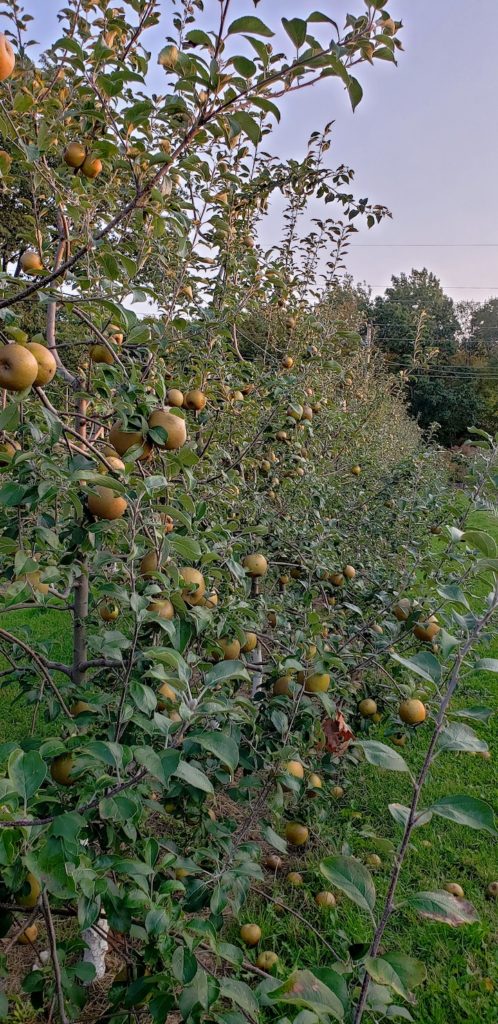
CHAPMAN’S LOVE OF NATURE had a strong spiritual dimension. He was a proselytizer of the Swedish theologian Emanuel Swedenborg (1688-1771). Swedenborg’s interpretation of the Bible held that everything in nature — not just plants and animals, but also inanimate objects like rocks and minerals — is spiritually divine.
Chapman lived by and preached this message to families that took him in from time to time. The American church started by Swedenborg’s followers never grew very large, with fewer than 10,000 members at its peak, but his elaborate cosmology attracted a number of intellectuals, including Ralph Waldo Emerson. On the frontier, where many were poor, illiterate, and focused on survival, Chapman was an anomaly.
Several stories about Chapman affirm his belief in the sanctity of all life. In one, Chapman regrets killing a rattlesnake with his hoe after it had bitten him. The snake was only doing what was natural for it, Chapman is alleged to have said, and he rued his act for years. In another story, Chapman is stung by a hornet trapped in his clothing, but he refuses to kill it, patiently helping it work its way out.
Apples are absent in these and other stories about Chapman’s humility and generosity. He was once given a pair of shoes, only to give them away to someone he judged needed them more than he. He saved lame or old horses from slaughter, nursing them to health and giving them to families that could use them.
Apples are incidental to stories about Chapman’s business acumen — or lack thereof. He owned little except the widely scattered parcels of land on which his orchards grew, and he did a poor job of holding on to them. Chapman’s ability to anticipate the settlers’ westward migration and plant apple orchards to supply new settlements has been described as visionary, and his tremendous energy and work ethic made his extensive plantings possible. But he was a poor bookkeeper, he was undercapitalized, and he was often exploited as an absentee landowner. He could just as easily have been planting melons or pears rather than apples in these stories, or even selling pencils, like the Thoreaus.
Another story portrays Chapman as a national hero during the War of 1812, without a mention of apples. Two months after American General William Hull surrendered to British and Indian forces at Detroit, leaving Ohio’s settlers vulnerable to retaliatory violence, Chapman warned settlers of the approach of Indian forces on several occasions, including one night in September 1812.
A religious-tinged version of that night ascribes to Chapman the Biblical-style warning: “The Spirit of the Lord is upon me, and he hath anointed me to blow the trumpet in the wilderness, and sound an alarm in the forest; for, behold, the tribes of the heathen are round about your doors, and a devouring flame followeth after them.”
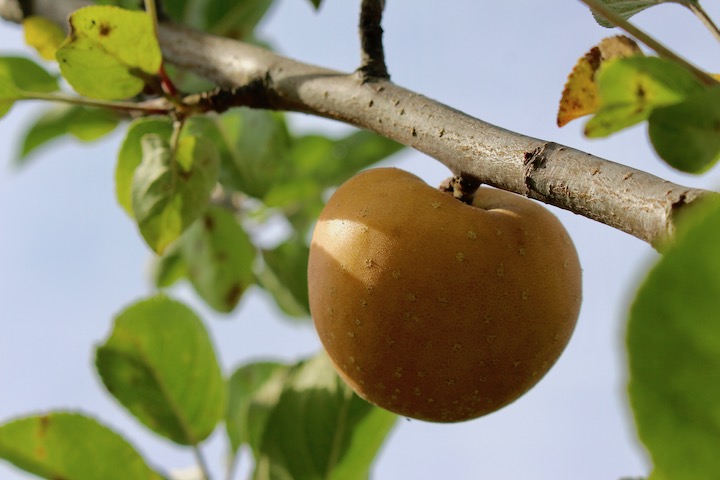
Such a stilted, long-winded warning, repeated many times, is unlikely. Other accounts of that night assert that Chapman ran 26 miles through the forest from Mansfield to Mount Vernon, Ohio, warning settlers along the way. It is doubtful that he would have traveled on foot rather than on horseback to deliver such an urgent message, especially at night. The reported distance of 26 miles is not the actual distance between the two towns (it is close to 40 miles), but the length of the modern marathon. Both versions of the story mythologize Chapman as a Paul Revere-like hero of the Ohio frontier.
Other legends about Chapman assign him almost super-human qualities of resourcefulness and endurance. During his first winter in Pennsylvania in 1797, according to one story, Chapman was stranded in a cabin in three-foot snowfall, and he fashioned snowshoes from beech branches to make his way out. During another harsh winter, he was said to have survived on a diet of butternuts. Like the rest of the tales about Chapman, neither story has anything to do with apples.
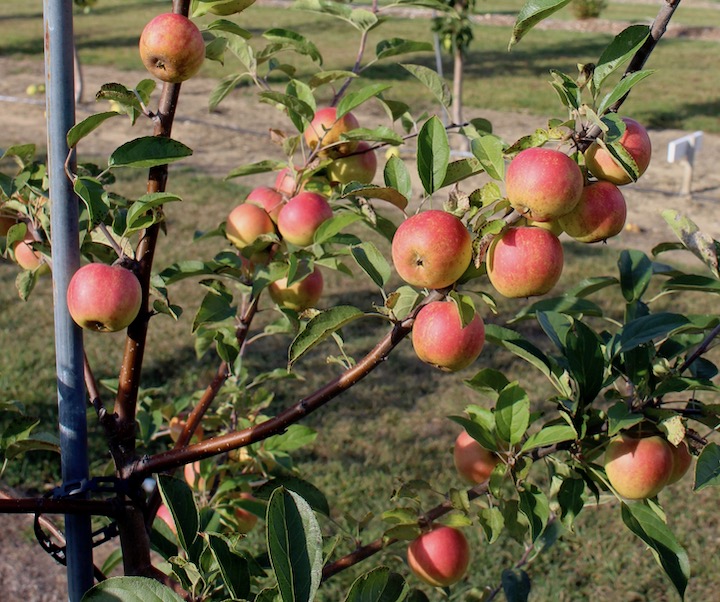
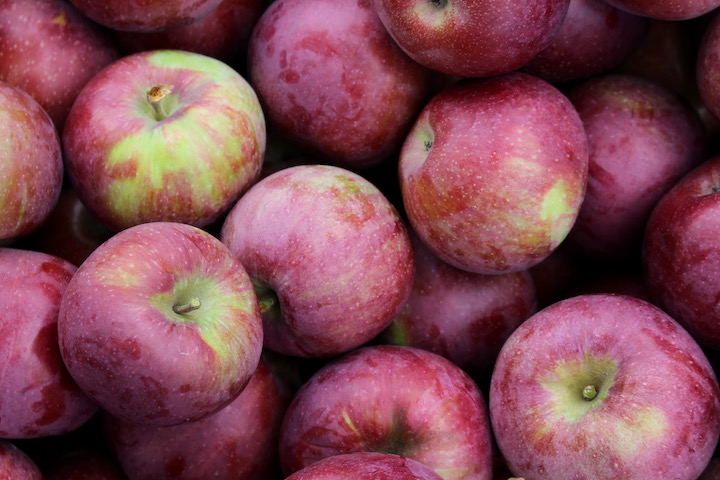
MANY OF THE CONTRADICTIONS embedded in these depictions of Chapman reflect America’s struggles with issues of class. Despite his primitive lifestyle, Chapman’s connection to Eastern intellectuals was evident in his literacy, his obscure and complicated religion, and his Massachusetts roots. These could easily be ridiculed on the frontier, especially when combined with his wild, unkempt appearance, when his energetic descriptions of heaven and earth left his audiences feeling a little uneasy.
The storyteller was stripped of his dignity by being assigned a dunce-like mushpot cap and a grotesque physical appearance, smelly, shoeless, in rags. Any comparisons with Christ were dashed with Chapman’s gnarly feet. Christ had his feet bathed by Mary Magdalene and washed the feet of his disciples; who would go near Chapman’s ugly toes?
More evidence of class conflict was evident in his nickname, Johnny Appleseed, rather than Appletree. Trees grown from seed were considered inferior to those planted from grafts. They were sown as freely by birds and animals as by humans, and most were bitter, sour, and uncouth looking, primarily good for cider. In Thoreau’s world back East, seedling apples were being replaced by grafted imports from Europe, many of them good for fresh eating. Apples from grafts were emblems of progress; seedling apples a way of life that was gradually receding, especially in the wake of the temperance movement of the early 1800s, which targeted hard cider.
Educated, well-to-do Easterners looked down on the poor, backward lifestyles prevalent along the western frontier. Chapman, with his Eastern upbringing, was caught between the two worlds. While he may have seemed full of strange ideas to the settlers, his appearance would have shocked and repelled the civilized world. To the modern man, Chapman represented a fading, impoverished past, symbolized by his nickname. The wilderness in which he lived was seen as an enemy of progress, as was his anti-materialism.
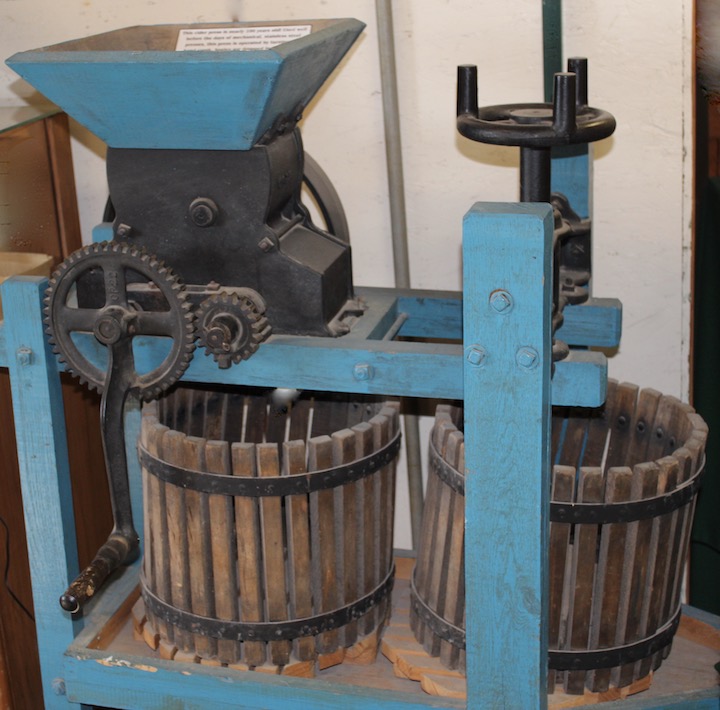
LITTLE IS KNOWN about Chapman’s youth, although that has not stopped numerous cartoonists and authors of children’s books from inventing childhoods for him. John Chapman was born in Leominster, Massachusetts, on September 26, 1774, the second child of Nathaniel and Elizabeth Symonds Chapman. His mother died of tuberculosis when John was two; Nathaniel, a soldier in the Continental Army, was away in New York at the time. Elizabeth Symonds’ parents likely took care of John and his older sister, also named Elizabeth, until Nathaniel retired from the army in 1780.
Not long after he was reunited with his children, Nathaniel married Lucy Cooley and they moved to a modest house in Longmeadow, Massachusetts, Cooley’s hometown. Nathaniel and Lucy had ten children together, making for a crowded household.
Still, John was 23 before he left home, heading west on foot with his oldest half-brother, Nathaniel, in 1797. They stopped when they reached the Allegheny wilderness north of Pittsburgh in western Pennsylvania, and while the thread of Nathan’s story gets lost here, John spent the next seven years learning survival skills and preparing for his lifelong work.
There were other entrepreneurs like Chapman who established fruit tree nurseries along the western frontier, but Chapman was the most ambitious and energetic. He would choose an area for an orchard where he anticipated westward expansion would be heading, usually by a river or tributary. The Indians, of course, lived on the land first, so there were some trails to guide him, and there was evidence of prior gatherings. Choosing sites near water was logical, and there were always a few rough woodsmen who preceded Chapman to even the remotest locations. But whether he was a true visionary or not, no one covered as much ground with as much energy for as long as Chapman.
He would clear by hand about three acres and plant them with apple seeds, fencing the orchard in with brush. He would return from time to time to tend the young trees, and when a small community of settlers had formed, Chapman would sell them saplings for a few cents apiece.
He did this in many locations, and he could have been a rich man. Demand for his saplings was high, as the settlers desired the fruit for their diets and needed the trees as proof of their intention to remain on the land.
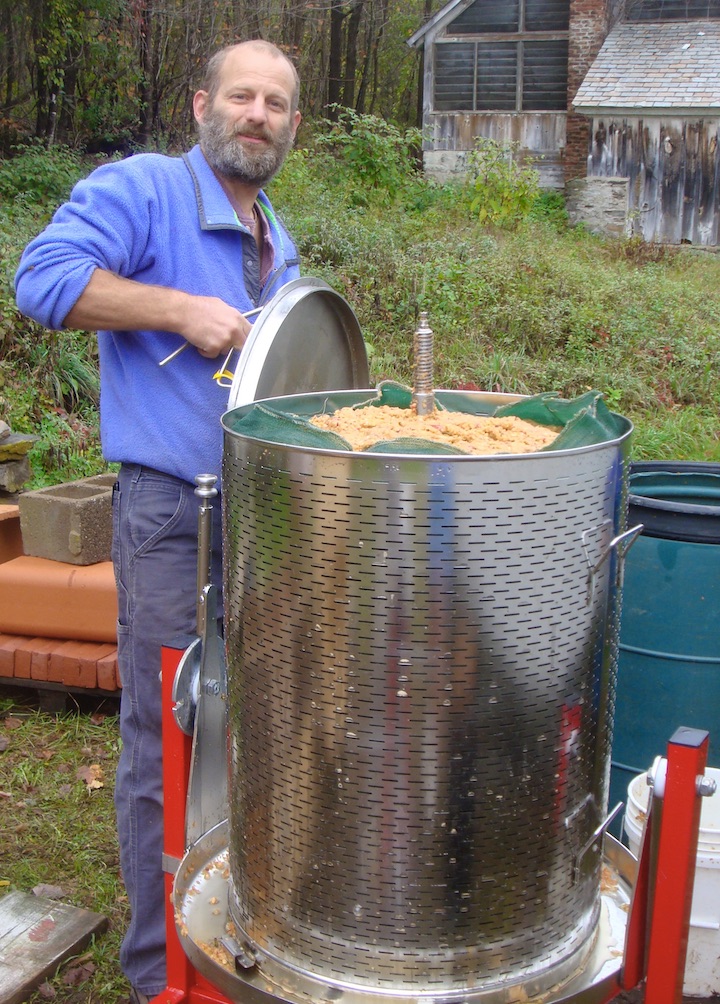
But when Chapman died of pneumonia, or “winter plague,” at age 70, he left little behind. Many of his land claims had been jumped in his absence during his lifetime, or forfeited for delinquent tax payments. Chapman was a poor bookkeeper, and he was bad at collecting his debts. Despite his reputation as a successful entrepreneur, Chapman seemingly cared little for money.
The enduring image of Chapman wearing a tin mushpot on his head has no basis in fact; “not a single authentic instance of its having been actually seen has been preserved,” wrote biographer Robert M. Price. Another myth claims that Chapman enjoyed a favorite variety of grafted apple, usually identified as Rambo or Grimes Golden. The practice of grafting to replicate desired varieties had been common for centuries before Chapman’s time, but consistent with his Swedenborgian worldview, he believed that grafting was tampering with nature.
There were practical reasons for Chapman to carry seeds rather than scions, too. Seeds were more plentiful, easier to carry, and required less care, especially over the distances Chapman had to travel in unpredictable conditions over rough terrain. Grafted varieties were not essential to settlers interested in an inexpensive source of sweetness and drink.
Massachusetts native Rufus Putnam, a general during the Revolutionary War, and his cousin Israel had successfully transplanted Roxbury Russets and several other grafted varieties a few miles north of Marietta, Ohio, in 1796. But grafted trees from New England or the Old World remained at greater risk for failure in the uncharted frontier, where little was known about the climate, soil, and other growing conditions. Chapman could not risk having a relatively few grafts fail, trusting instead in the random process of natural selection. His countless seedlings accelerated the apple’s adaptation to this new country, as only the best and hardiest trees survived.
